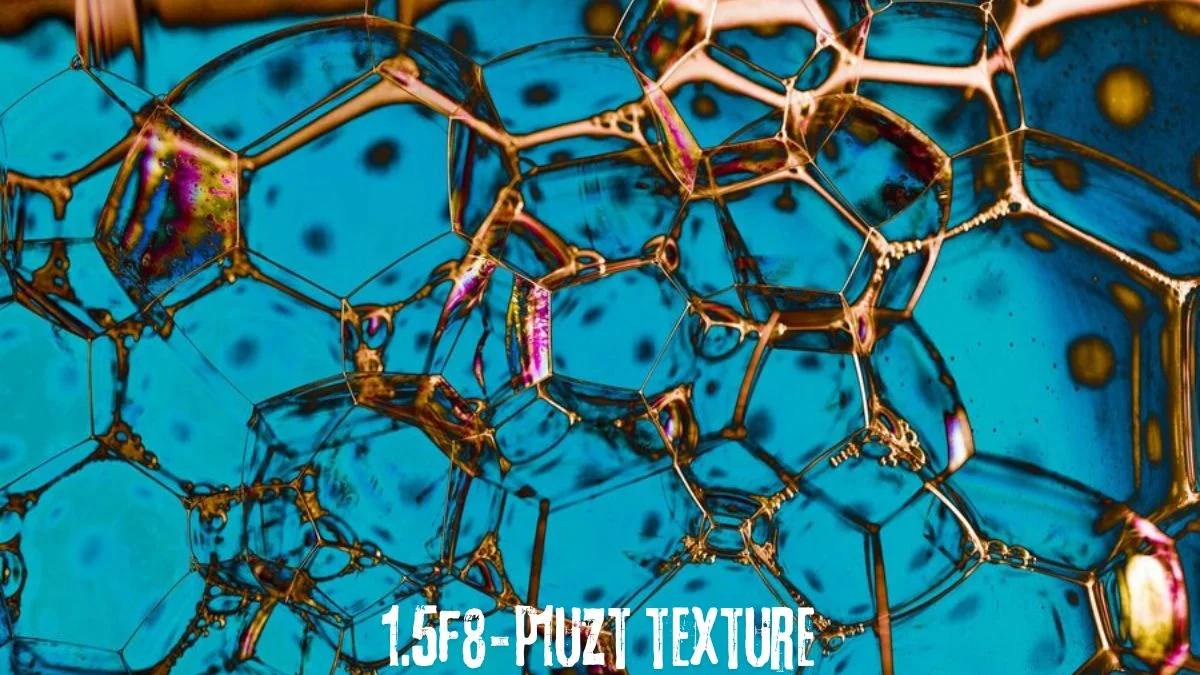Technology
Arizona Red Upper Silver Lower Car Wrap: A Bold and Stylish Choice for Your Ride

Car wraps have revolutionized vehicle customization, and if you’re in Arizona, the combination of red upper and silver lower wrap is a stylish choice. Let’s explore everything you need to know about this unique car wrap combination.
What is a Car Wrap?
A car wrap is a large vinyl decal applied to the exterior of a car to change its appearance. Unlike a traditional paint job, wraps are temporary and can be removed, making them an appealing option for those who want to personalize their vehicle without permanent changes.
Why Car Wraps are Popular in Arizona
Arizona, known for its vibrant car culture, is home to a large number of car enthusiasts who love to modify and personalize their vehicles. The sunny, dry climate also makes vinyl wraps an excellent option since they protect the car’s surface from harsh UV rays.
Understanding the Arizona Red Upper Silver Lower Car Wrap
Color Psychology: Red and Silver
Red is a color that conveys energy, passion, and confidence. It’s bold and makes a statement on the road. Silver, on the other hand, symbolizes sophistication, elegance, and modernity. When combined, these colors create a striking contrast that captures attention while exuding a sense of style and refinement.
Aesthetic Appeal of Red and Silver Combination
The red upper and silver lower car wrap combination offers a sleek, sporty look. The upper red portion highlights the vehicle’s top profile, while the silver lower half adds an understated, classy touch.
Advantages of Arizona Red Upper Silver Lower Car Wrap
Durability in Arizona’s Climate
Arizona’s intense sun and dry heat can wreak havoc on traditional car paint. A vinyl car wrap provides an extra layer of protection, reducing the likelihood of paint fading or damage.
UV Protection and Heat Resistance
Vinyl wraps are designed to resist UV rays, keeping your vehicle cooler in the Arizona heat. The silver lower portion, in particular, helps reflect sunlight, while the red upper adds an eye-catching pop.
Customization and Personalization
One of the greatest benefits of a car wrap is that it allows you to tailor your car’s look to your personal style. Whether you prefer a glossy red finish or a matte silver lower section, the customization options are nearly limitless.
How to Choose the Best Car Wrap Material
Vinyl Wrap: The Most Popular Material
Vinyl is the most commonly used material for car wraps due to its durability, flexibility, and cost-effectiveness. It’s perfect for standing up to the harsh Arizona sun.
Choosing the Right Finish: Matte, Gloss, or Satin
The finish of your wrap can drastically change its appearance. Matte finishes offer a subtle, non-reflective look, while gloss wraps mimic the appearance of a fresh paint job. Satin offers a middle ground, combining some shine without the full reflective quality of gloss.
Installation Process of a Car Wrap
Professional vs. DIY Installation
While some car owners may be tempted to install a wrap themselves, professional installation is recommended to avoid bubbling, misalignment, and premature peeling.
Step-by-Step Process of Wrapping a Car
- Preparation: The car is thoroughly cleaned to remove dirt and oils.
- Measuring and Cutting: The vinyl wrap is measured and cut according to the car’s dimensions.
- Application: The wrap is applied, starting from one section and working through the vehicle.
Tools Needed for Installation
A heat gun, squeegee, and precision blade are essential tools for a successful installation.
Maintaining the Arizona Red Upper Silver Lower Car Wrap
How to Clean and Care for the Wrap
Regular cleaning is crucial to maintain the vibrant colors of your wrap. Avoid harsh chemicals and use a soft cloth with a gentle cleaning solution.
Avoiding Fading and Peeling
Parking in shaded areas and using a car cover can help extend the lifespan of your wrap, especially in Arizona’s hot climate.
Cost of Installing a Car Wrap
Breakdown of Costs: Material, Labor, and Additional Services
The total cost of a wrap depends on the material, the size of the vehicle, and labor fees. On average, a high-quality car wrap ranges from $2,500 to $5,000.
Factors Affecting the Cost of a Car Wrap
Custom designs, additional graphics, and special finishes like metallic or chrome can significantly increase the price.
Common Mistakes to Avoid with Car Wraps
Incorrect Installation Techniques
One common mistake is applying the wrap without properly prepping the surface, which can lead to bubbles or poor adhesion.
Failing to Properly Clean the Car Before Wrapping
Dirt, dust, or oils left on the car can interfere with the wrap’s adhesive, leading to premature wear.
Customization Options for Car Wraps
Adding Graphics, Logos, or Patterns
Customizing your wrap with unique designs, company logos, or patterns is a great way to stand out on the road.
Reflective and Metallic Finishes
For a more dynamic look, consider metallic or reflective finishes that shimmer under sunlight or headlights.
Removing a Car Wrap
How Long Does a Wrap Last?
With proper care, a car wrap can last anywhere from 5 to 7 years.
Safe and Effective Wrap Removal
When it’s time to remove the wrap, professional removal is recommended to avoid damaging the car’s original paint.
Arizona’s Car Culture and the Role of Custom Wraps
Why Customization is Popular in Arizona
In Arizona, car culture is strong, and customizations like car wraps are a reflection of the owner’s personal style and preferences.
How Car Wraps Enhance Vehicle Resale Value
A well-maintained wrap can protect the car’s paint, ensuring the vehicle retains a higher resale value.
Comparing Paint vs. Car Wraps
Cost Comparison
While a paint job can cost significantly more, wraps offer a cost-effective alternative with the added benefit of being removable.
Durability and Aesthetic Differences
Wraps offer a wider range of customization options, while traditional paint jobs offer longer-lasting solutions without needing removal or replacement.
Benefits of Hiring a Professional Installer
Expertise and Precision
Professionals have the experience to apply wraps with precision, ensuring a seamless finish.
Warranty and Aftercare Services
Many professional installers offer warranties on their work, giving you peace of mind knowing your wrap is protected.
Conclusion
An Arizona red upper silver lower car wrap is a bold and stylish way to enhance your vehicle’s look. Its durability, customization options, and ability to withstand Arizona’s harsh climate make it a smart choice for car enthusiasts.
FAQs
- How Long Does It Take to Install?
Typically, installation takes 1 to 3 days depending on the complexity of the wrap. - Can I Change Just One Color of My Wrap?
Yes, you can modify individual sections of your wrap without replacing the entire thing. - Will the Wrap Damage My Car’s Paint?
No, as long as it’s installed and removed properly, a wrap won’t damage your car’s paint. - Is the Wrap Safe for All Vehicles?
Yes, wraps are safe for most vehicles, including cars, trucks, and motorcycles. - Can I Remove the Wrap Myself?
While it’s possible, it’s best to have a professional remove the wrap to avoid damage to your car’s paint.
Technology
AppforDown Android: Your Ultimate Guide to the Best Android Apps and Games

Are you an Android user who loves to explore new apps and games? Then you’ve probably heard about AppforDown Android. This platform is quickly becoming one of the go-to resources for Android enthusiasts looking to download the latest apps and games. But what makes it so special? In this comprehensive guide, we’ll explore what AppforDown is, how it works, its benefits, and everything you need to know about using it for all your Android needs.
What is AppforDown Android?
AppforDown Android is a third-party website that provides Android users with free downloads for a wide range of apps, games, and APK files. Unlike the Google Play Store, which requires apps to go through a rigorous approval process, AppforDown allows users to download and install applications directly without the usual restrictions. This makes it an appealing option for those who are looking for alternative sources to explore the Android ecosystem.
How Does AppforDown Android Work?
Understanding how AppforDown works is essential for anyone who wants to use it. The platform hosts APK files that you can easily download and install on your Android device. Here’s a simple breakdown of the process:
- Visit the AppforDown website on your Android device.
- Browse the vast collection of apps and games available for download.
- Click on the app or game you want to download.
- Download the APK file to your device.
- Install the app by enabling “Install from unknown sources” in your device settings.
- Enjoy the app or game on your Android device.
This simple process makes it easy to access apps and games that may not be available in your country or region.
The Benefits of Using AppforDown Android
1. Access to Exclusive Apps and Games
One of the key benefits of using AppforDown is that it offers access to apps and games that are not available on the official Google Play Store. These could be regional apps, beta versions, or simply apps that the Play Store has removed for various reasons.
2. Free Downloads
Unlike the Play Store, which sometimes requires a purchase to download certain apps or games, AppforDown provides most of its content for free. This makes it an excellent option for those who want to explore new apps without spending any money.
3. No Geo-Restrictions
AppforDown removes the limitations that often come with geo-restricted apps. If you live in a country where certain apps are unavailable, you can easily download and install them via AppforDown.
Is AppforDown Safe to Use?
When downloading apps from third-party sites like AppforDown, safety is always a concern. The platform itself claims to provide safe downloads, but there are some precautions you should take to avoid downloading malicious files.
Tips for Safe Usage
- Always check the reviews of apps and games before downloading them.
- Use antivirus software to scan APK files before installation.
- Only download apps from trusted sources to avoid potential security risks.
How to Download Apps from AppforDown Android
Downloading apps from AppforDown is a simple process, but it’s important to follow the steps carefully to ensure everything goes smoothly.
Step-by-Step Guide for Downloading APKs
- Enable Unknown Sources: Before downloading any APK file, you’ll need to enable the option to install apps from unknown sources. Go to Settings > Security > Install from Unknown Sources, and toggle it on.
- Browse the AppforDown Website: On your Android device, open your browser and go to the AppforDown website.
- Select the App or Game: Use the search bar or browse through categories to find the app or game you want.
- Download the APK: Once you’ve found the app, click the download button, and the APK file will be saved to your device.
- Install the APK: After the download is complete, tap the file to begin the installation process. Confirm the installation and follow the on-screen instructions.
- Enjoy: Once installed, you can start using the app right away!
Top Categories of Apps on AppforDown Android
1. Popular Games
AppforDown offers a wide selection of mobile games, from the latest releases to classic hits. Whether you’re into action, puzzle, or strategy games, you’ll find something for everyone.
2. Productivity Apps
For those who want to stay organized, there’s a range of productivity apps available on AppforDown. From task managers to note-taking apps, you can download tools that help increase efficiency.
3. Entertainment Apps
AppforDown also offers a variety of entertainment options, such as music and video streaming apps, social media platforms, and more.
4. Utility Apps
Looking for apps to improve your device’s performance or battery life? AppforDown has several utility apps that can optimize your Android device.
How to Install APKs Safely
Enable Permissions
When installing APKs from sources like AppforDown, make sure your Android device is set to accept apps from unknown sources. However, be cautious and install apps only from reputable websites to avoid security threats.
Use APK Scanners
There are various APK scanning tools available that allow you to check the safety of the downloaded APK before you install it. Always use such tools to minimize risks.
Alternatives to AppforDown Android
1. Aptoide
Aptoide is a well-known third-party app store that allows users to download APKs. Like AppforDown, Aptoide offers free and exclusive apps that aren’t always available on the Play Store.
2. APKPure
APKPure is another popular platform for downloading Android apps. It hosts APK files for a wide variety of apps and ensures that they are safe to install.
3. Uptodown
Uptodown is a reliable app store offering APK downloads for Android devices. It focuses on providing users with a vast catalog of apps, including those that are not available in specific regions.
Why Choose AppforDown Over Other APK Sources?
While there are many third-party sources for downloading Android apps, AppforDown stands out due to its user-friendly interface, variety of available apps, and easy download process. If you’re looking for a hassle-free way to download apps without the regional restrictions of the Play Store, AppforDown could be the perfect solution.
Common Issues When Using AppforDown Android and How to Fix Them
1. Installation Failed
If you encounter the “Installation Failed” error, it could be due to insufficient storage space on your device or a corrupted APK file. Try clearing space on your device or downloading the file again.
2. App Crashes After Installation
App crashes are a common issue when installing apps from third-party sources. To fix this, try reinstalling the app, ensuring that your device meets the app’s system requirements.
Conclusion: Is AppforDown Android Worth Using?
In conclusion, AppforDown Android offers a great alternative to the Google Play Store, providing free access to apps and games that you might not find elsewhere. While there are some security concerns to be aware of, taking proper precautions can ensure a safe and enjoyable experience. If you’re looking for a platform that offers variety, free downloads, and fewer restrictions, AppforDown is definitely worth considering.
FAQs
1. Is it legal to download apps from AppforDown?
Downloading apps from AppforDown is legal, but some apps may be subject to copyright laws or restrictions. Always check the legality of an app in your region before downloading.
2. Can I get updates for apps downloaded from AppforDown?
AppforDown doesn’t provide automatic updates for apps. You’ll need to manually check for newer versions and download the APK file again.
3. Is AppforDown available in all countries?
AppforDown is accessible worldwide, but some apps may be geo-restricted. If you encounter restrictions, you can use VPN services to access certain apps.
4. How can I avoid malware when using AppforDown?
To avoid malware, always download apps from trusted sources, read user reviews, and use antivirus software to scan APKs before installing.
5. Are there any alternatives to AppforDown?
Yes, there are several alternatives like Aptoide, APKPure, and Uptodown that offer similar services for downloading Android apps.
Technology
Exploring Aksano Corp – Innovation in Action

Founded with the goal of pushing boundaries, Aksano Corp has steadily evolved into a powerhouse of innovation. From its humble beginnings, the company has grown into a global leader, recognized for its groundbreaking solutions and commitment to excellence.
Vision and Mission of the Company
Aksano Corp envisions a world where technology seamlessly integrates into every aspect of life, enhancing efficiency, sustainability, and quality of living. Its mission is to deliver transformative solutions that empower businesses and communities alike.
Core Services and Products
Cutting-Edge Technology Solutions
Aksano specializes in designing and deploying advanced technological systems tailored to meet the unique needs of its clients. From AI-driven software to IoT solutions, their offerings redefine what’s possible.
Sustainable Business Practices
The company integrates eco-friendly methodologies across its operations, ensuring minimal environmental impact while maximizing efficiency.
Customizable Offerings for Clients
Aksano understands that one size doesn’t fit all. Their solutions are fully customizable, ensuring every client gets precisely what they need to thrive.
Industries Served by Aksano Corp
Healthcare Innovations
Aksano’s healthcare technologies streamline processes, enhance patient care, and reduce operational bottlenecks for medical facilities.
Education and Training Tools
Through interactive platforms and e-learning systems, Aksano revolutionizes the education sector, making learning more accessible and engaging.
Manufacturing and Automation
In manufacturing, Aksano provides automation tools that improve productivity, reduce costs, and enhance safety.
Aksano’s Impact on Innovation
Revolutionizing Industries
The company has played a pivotal role in transforming traditional industries, introducing efficiency and adaptability through its cutting-edge solutions.
Fostering Technological Progress
Aksano is a trailblazer, constantly pushing the envelope in AI, robotics, and sustainable systems.
Contribution to Sustainability Goals
With green technology at its core, Aksano supports global sustainability efforts by reducing carbon footprints and promoting renewable energy integration.
Company Culture and Workforce
Emphasis on Diversity and Inclusion
Aksano’s diverse team is its greatest asset. The company champions inclusivity, ensuring a dynamic, innovative workforce.
Employee Development Programs
Through continuous training and skill-building programs, Aksano invests heavily in its employees’ growth.
Collaborative Work Environment
Aksano’s open and collaborative culture fosters creativity and team cohesion, driving innovative outcomes.
Why Choose Aksano Corp?
Competitive Edge in the Market
Aksano’s commitment to innovation and quality gives it a distinct advantage over competitors.
Exceptional Customer Support
The company prides itself on delivering unparalleled customer service, ensuring client satisfaction at every step.
Commitment to Client Success
Every partnership with Aksano is built on the principle of mutual growth and success.
Future Outlook for Aksano Corp
Upcoming Projects and Goals
From launching new AI systems to pioneering green tech initiatives, Aksano’s future is as ambitious as it is promising.
Expanding Global Presence
With operations in multiple countries, Aksano aims to broaden its impact and reach.
Continued Investment in Innovation
Aksano remains steadfast in its commitment to research and development, ensuring it stays at the forefront of technological advancement.
Testimonials and Case Studies
Success Stories Across Industries
From healthcare to manufacturing, Aksano has consistently delivered transformative solutions that drive real results.
Positive Client Feedback
Clients praise Aksano for its innovative approaches, timely delivery, and unwavering support.
Conclusion
Aksano Corp stands as a beacon of innovation, seamlessly blending technology, sustainability, and client-centered solutions. Whether you’re in healthcare, education, or manufacturing, partnering with Aksano means stepping into a future of endless possibilities.
FAQs About Aksano Corp
What services does Aksano Corp specialize in?
Aksano Corp offers technology solutions in AI, IoT, automation, and sustainable practices across multiple industries.
How does Aksano ensure sustainability in its operations?
The company employs eco-friendly methods and integrates renewable energy to minimize its environmental footprint.
Which industries benefit most from Aksano’s solutions?
Healthcare, education, and manufacturing are just a few of the sectors that thrive with Aksano’s innovative offerings.
What sets Aksano apart from competitors?
Aksano’s blend of cutting-edge technology, client customization, and exceptional service gives it a unique market edge.
Where can I learn more about Aksano Corp?
Visit the official website or connect with them through social media for updates and insights.
Technology
Understanding the Significance of 1.5f8-p1uzt Texture

In the ever-evolving world of material science, certain innovations stand out due to their groundbreaking impact. One such development is the 1.5f8-p1uzt texture, a specialized material known for its unique properties and wide-ranging applications. But what makes this texture so significant? Let’s dive deep into its characteristics and importance.
The Basics of Textures
Defining Texture in Material Science
At its core, texture refers to the surface quality or arrangement of a material. It can dictate how a material interacts with its environment, influencing properties like durability, conductivity, and appearance.
How Textures Impact Functionality
Textures play a pivotal role in enhancing material efficiency. For instance, finely tuned textures can improve heat dissipation in electronics or provide aerodynamic advantages in aerospace designs.
Exploring 1.5f8-p1uzt Texture
Origin and Development
The 1.5f8-p1uzt texture’s emerged as a solution to industry-specific challenges. Researchers combined advanced materials with innovative processes to create a texture that excels in demanding environments.
Characteristics of 1.5f8-p1uzt Texture
Key Features
- Composition and Structure: Built with a composite matrix that ensures stability and adaptability.
- Unique Properties: Offers exceptional resistance to wear and tear while maintaining a lightweight profile.
Applications Across Industries
- Electronics and Semiconductors: Its precision and thermal stability make it invaluable for microchips.
- Aerospace Innovations: Ideal for components that require both strength and low weight.
Advantages of 1.5f8-p1uzt Texture
Enhanced Durability
Materials featuring this texture show remarkable resistance to environmental stressors, ensuring long-term reliability.
Energy Efficiency
Its ability to minimize energy loss has made it a popular choice in sustainable applications.
Comparison with Other Textures
- Performance: Outshines competitors in extreme conditions.
- Use-Case Examples: Widely adopted in cutting-edge renewable energy projects.
Challenges in Implementing 1.5f8-p1uzt Texture
While promising, the texture is not without its challenges. High production costs and the need for specialized equipment can be hurdles for some industries.
The Future of 1.5f8-p1uzt Texture
Emerging Trends
From flexible electronics to next-gen aerospace designs, the texture is paving the way for innovation.
Potential Innovations
- Integration in Renewable Energy: Enhancing the efficiency of solar panels.
- Advancements in Microelectronics: Enabling smaller, more powerful devices.
Environmental Impact of 1.5f8-p1uzt Texture
Sustainability and Recycling
Efforts are underway to ensure that materials using this texture are recyclable, reducing waste and promoting sustainability.
Reducing Carbon Footprint
Its energy-efficient design contributes to a greener manufacturing process.
Key Insights from Case Studies
Successful Implementations
Industries like aerospace have reported improved performance metrics after integrating 1.5f8-p1uzt texture’s.
Lessons Learned
Proper training and adaptation of manufacturing processes are essential for maximizing its benefits.
How to Optimize Usage of 1.5f8-p1uzt Texture
Best Practices in Manufacturing
Utilizing advanced fabrication methods ensures consistency and quality.
Maintenance Tips
Regular inspections can extend the lifespan of materials featuring this texture.
Conclusion
The 1.5f8-p1uzt texture represents a leap forward in material science, offering unmatched durability, energy efficiency, and adaptability. As industries continue to explore its potential, it promises to redefine standards across sectors.
FAQs
- What is 1.5f8-p1uzt texture, and where is it used?
It’s a specialized material texture used in industries like electronics and aerospace for its unique properties. - How does 1.5f8-p1uzt texture’s differ from traditional textures?
It offers superior durability, energy efficiency, and adaptability compared to conventional materials. - What are the major benefits of 1.5f8-p1uzt texture’s in industries?
Enhanced performance, cost-effectiveness in the long run, and environmental benefits. - Are there any environmental concerns related to its use?
While initial production can be resource-intensive, recycling efforts mitigate environmental impacts. - What is the future outlook for 1.5f8-p1uzt texture’s?
It is poised for growth, especially in renewable energy and microelectronics sectors.
-

 General9 months ago
General9 months agoCask Technologies LLC Lawsuit: An In-Depth Look into the Legal Battle
-

 Technology9 months ago
Technology9 months agoFacilities That Use Cutting-Edge Medical Technology for Intubation
-

 Technology9 months ago
Technology9 months ago4416-4420 Technology Drive, Fremont, CA 94538: A Hub of Innovation and Growth
-

 Games9 months ago
Games9 months agoThe Ultimate Guide to Appfordown Games
-

 Technology9 months ago
Technology9 months agoRevo Technologies Murray, Utah: A Leader in Innovative Solutions
-

 Crypto9 months ago
Crypto9 months agoCrypto-Legacy.App Software: Revolutionizing Cryptocurrency Management
-

 Entertainment9 months ago
Entertainment9 months agoThe Ultimate Guide to Rear Seat Entertainment Systems
-

 Games7 months ago
Games7 months agoVanessa-Casino.com Mystical Card Game: A Journey into Enchantment
